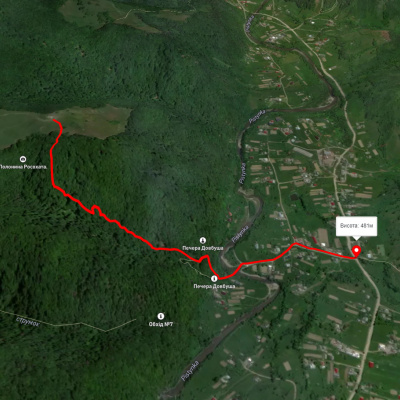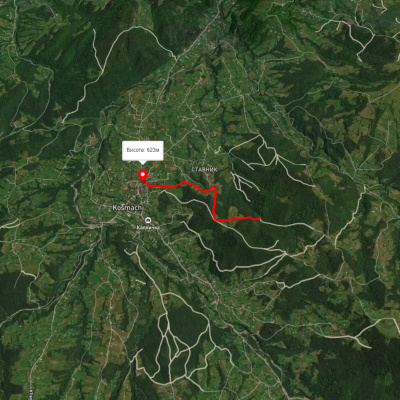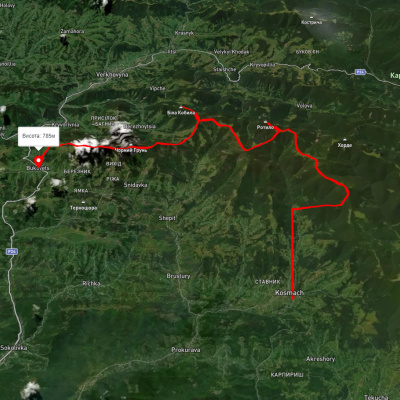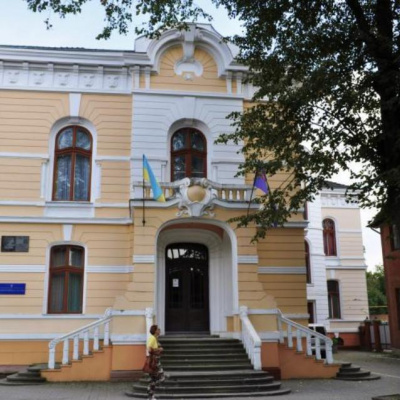Museum of the history of the city of Kolomyia
Kolomyia is one of the oldest cities in Ukraine with magnificent architecture and rich folk art. Its rich historical heritage is widely represented in the Museum of the City's History. It contains the first chronicle references to the city, documents, items from the everyday life of the townspeople, and photographs. The collected exhibits make it possible to trace the entire diverse history of the city, including the history of German colonies in Kolomyia, the history of city government, Kolomyia and the Habsburgs, the city's economy and trade, the education of citizens, the history of the Jewish community, and much more. There are 18 exhibition halls in total .
In 1997, under the leadership of Ihor Dovhaniuk, the mayor of Kolomyia, and with the help of Olha Rudanets, the head of the Congress of Ukrainian Intellectuals of Kolomyia (then assistant to the mayor), the Museum of the History of Kolomyia received the best building in the city at 80 Roman Shukhevych Street for permanent use.
The house on the corner of today's Roman Shukhevych and Lesia Ukrainka streets has seen and experienced a lot. Here, in the building of the county council, issues of development of the city and surrounding villages were resolved, and important decisions were made here during the ZUNR by Theodore Prymak. The room where Theodore Prymak used to work is now the exhibition "Kolomyia and the Habsburgs." Here, in the interior of the city room, the Austrian Emperor Franz Joseph, who visited Kolomyia twice, and his successor, Archduke (and later the last emperor of Austria-Hungary) Karol Franz Joseph and his wife Zita, who lived in Kolomyia in 1912 and waited for the birth of another heir to the Habsburg family (and now the head of the house), Otto von Habsburg, are prominently displayed.
Today, 18 exhibition halls, as well as fund and office premises, contain photographs, documents, memorabilia, and everyday items of the townspeople, more than 20 thousand items of preservation. From the first chronicle mention in 1241 to the present day.
The journey through the museum's halls is fascinating and does not repeat what you have seen in other museums of this profile in the region. The expositions are created as the collections are replenished with materials that make it possible to fully cover a particular topic. If you visit the museum, you will discover such pages of Kolomyia's history as "German colonies of Kolomyia"; "Education of Kolomyia in the late nineteenth and early twentieth centuries"; "Economy and trade of the city in the nineteenth and twentieth centuries"; "From the history of the Jewish community of the city"; "From the history of Ukrainian ethnic lands of modern Poland until 1944" and others.
To celebrate the International Museum Day this year, two more thematic exhibitions opened their doors to Kolomyia residents and guests. These are "Regional Authorities" and "Kolomyia and the Habsburgs". The opening of a new thematic exposition or art exhibition is an event. It is an event that opens a new page in the history of the chronicled Kolomyia for our contemporaries. Then the museum halls are crowded. As a rule, these are longtime sincere supporters of the museum who have been visiting it for 15 years.
Every year the museum's visitors are getting younger. The museum has already become a home for students of the Kolomyia Polytechnic College (teachers Vasyl Fuchko and Andriy Okhrym). It is both gratifying and sad that Volodymyr Pyhrodska, Emilia Matsiborko, Hryhorii Pryshliak, and Stefania Kadobianska-Pryshliak no longer come to museum meetings. The years that have passed do not let Lidia Biel, Zenovia Hoyaniuk, and Halyna Hrabets leave their homes, and on the eve of holidays, especially Museum Day, their sincere greetings are heard from the phone.
Today, the museum is not just a treasure trove of Kolomyia's time. It is a living organism. The museum and its employees have a rainbow aura, the spectrum of which is well conveyed by exhibitions of works by Marta Tomenko, Andrii Koreniuk, Oksana Bobkova, Serhii Zinets, Iryna Tolmach, Tetiana Obushak, paintings by young artists, students of the Kolomyia Pedagogical College and Institute, Kolomyia Art School and poetic canvases woven from lines written by our poets Dmytro Hrynkiv, Myroslav Lazaruk, Vasyl Riaby.
The artistic range of the museum's activities is successfully complemented by pupils of children's music schools and performers of patriotic songs, veterans of the liberation struggle.
It is impossible not to mention one more Kolomyia's attraction - the Pysanka Museum, which is one of a kind. The appearance of the museum has become the hallmark of the city. No less interesting is the Museum of Folk Art of Hutsul and Pokuttya, which has a unique exhibition of folk art.
Accommodation around Museum of the history of the city of Kolomyia:
Nearby hiking trails near Museum of the history of the city of Kolomyia:
Які маршрути проходять повз Museum of the history of the city of Kolomyia?
Пропонуємо пройти такі туристичні (пішохідні) маршрути через/біля Museum of the history of the city of Kolomyia: Шешори - Росохата, Дорога опришків, с. Космач, через г. Ротило, г. Грегіт, г. Біла Кобила до с.Буковець, с. Микуличин, через г. Хорде, г. Ротило до с. Космач, пер. Німчич - Протяте Каміння, ур. Медвежий - г. Куратул






